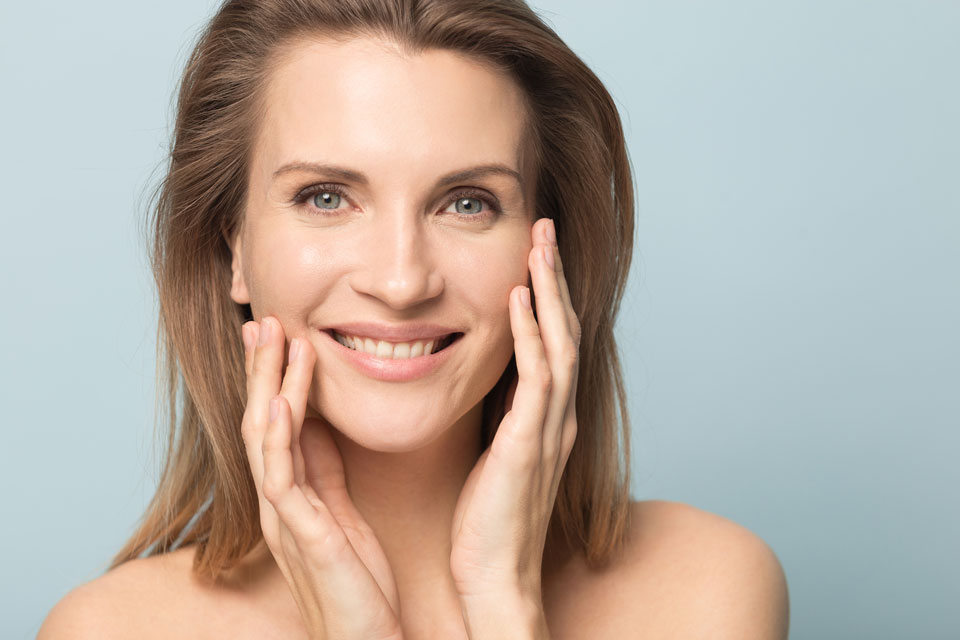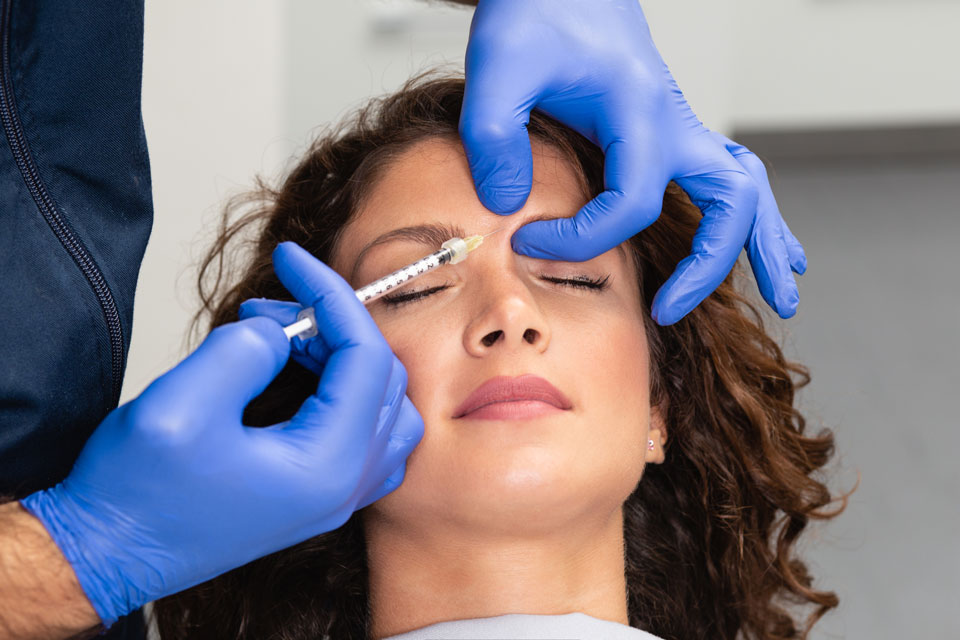Botox – A Weapon In The Fight Against Wrinkles

We laugh, we cry, we get angry, surprised, and scared – that’s life in a nutshell. Everyone uses facial muscles for habitual expressions, whether we engage in interpersonal encounters or read a fascinating page-turning book. Those facial mimicries, along with daily stresses, the aging process, sun exposure, genetic predispositions, and environmental agents, promote wrinkle formation. Our skin is in a constant battle, and with the passing time, it loses its protective ability to fight off the ever-present intruders. Fortunately, modern aesthetic medicine comes to the rescue. Botox is a wonderful weapon against the presence of wrinkles, effectively and safely minimizing their appearance, allowing you to regain confidence and youthful skin.
The true nature of facial wrinkles:
From a medical perspective, skin aging is a natural, biologically programmed, gradual, and nonstop loss of cell, tissue, organ, and system function. It is a process that disrupts the perfectly regulated mechanisms of your body’s functioning. We can distinguish several types of skin aging:
- Intrinsic (chronological) aging is a broad term for all biological and genetic age-related changes, including hormonal shifts.
- Mimicry aging is related to visible changes as a result of facial expressions.
- Extrinsic aging (photoaging) is caused by external factors, such as excessive exposure to UV radiation or smoking.
The skin is the largest communication organ in the human body.
The proper functioning of the skin is based on intercellular connections that allow cells to interact with each other and with the environment. Channels created by connexins, small membrane proteins, take part in exchanges that regulate the primary functions of cells: respiration, restoration, protection, nutrition, maintenance of an adequate pH level, storage of mineral salts, and hormonal reactions.
Age-related skin dysfunction is characterized by a malfunction of the connexins. The critical roles of the skin are disrupted and weakened, including loss of cohesion between skin layers, a reduction in the amount of naturally-occurring skin components (collagen, elastin, hyaluronic acid), and damage to the skin’s protective barrier. All of these lead to accelerated loss of firmness, dryness, and glow.
Disruption of the proper functioning of the skin
The consequence of changes taking place in the aging skin is the disruption of its proper functioning. The cell renewal process slows down in the epidermis. The skin’s lipid count and water-holding capacity are reduced. The border between the epidermis and dermis flattens, which means that it is not able to actively exchange nutrients.
Both the amount and activity of fibroblasts, which are responsible for the formation of collagen and elastin, crucial skin proteins, are dropping. In addition, the number of melanocytes accountable for the production of melanin in the skin decreases. The changes throughout the body are mainly visible on the skin of the face and neck.
What are the causes of wrinkles?
Expressive facial language, such as laughing, frowning, squinting, grimacing, or focus, are all parts of daily life. They are responsible for the formation of wrinkles and loss of texture. Wrinkles appear perpendicular to the muscle, resulting in a depression in the skin. When these contractions are repeated, the functioning of fibroblasts around a given muscle is disturbed, which leads to the creation of permanent wrinkles.
Improper skin hydration and increased water loss also contribute to the formation of fine lines. Other factors include smoking, inadequate skincare, weakness resulting from taking certain medications, or chronic stress. External aspects, such as UV radiation, changes the skin structure, reduces its elasticity, and accelerates the appearance of furrows. It is comforting to know that we have some type of influence over the condition of our skin. And here’s the kicker: with the cutting-edge advancements in aesthetic medicine, we can reverse the effects of time.
What exactly is Botox?
Botulinum toxin is a natural toxin produced by the anaerobic bacteria Clostridium botulinum. It was first used in 1973 to treat urinary incontinence, facial nerve paralysis, and muscle spasms. The solution has properties that inhibit the release of acetylcholine – a neurotransmitter responsible for sending signals between nerves and muscles.
Modern medicine works with preparations made of isolated bacterial strains, purified, and vacuum-packed. The number of doses administered depends on the procedure – in aesthetic medicine, we can safely inject up to 100 units. The main indication for Botox procedure is to minimize the appearance of wrinkles. Still, the injectable is also performed to treat strabismus, neurological diseases related to muscle tension, headaches, and even excessive sweating.
Botox is what initiated the first infant steps of aesthetic medicine. Initially, Botox was performed for strictly medical indications and quickly was on the path to effective wrinkle reduction, rejuvenating men and women across the globe. Despite the appearance of many different cosmetic solutions in the industry, Botox remains the best known and most frequently used treatment.
Botox, in the hand of an experienced and licensed practitioner, is a safe method with excellent results. The solution is administered in small amounts, works locally, is not absorbed by the body, and leaves without a trace after a few months of its injection.
Expression lines can become visible in younger people as well. In those cases, Botox is often administered as a preventative measure. The less often we wrinkle our forehead, the less likely the fine lines will become prematurely permanent.

How long does Botox last?
Botox is a temporary solution to smoothing out facial wrinkles. After some time, the effects are neutralized, and the treatment should be performed again to maintain the previously obtained results.
Depending on individual predispositions, botulinum toxin stays in the skin anywhere from 3 to 6 months, while some may have an extended period of up to 8 months.
How can I benefit from Botox injections?
The primary application of Botox in aesthetic medicine is to eliminate facial wrinkles. The noninvasive injections act directly on the nerve endings, where nerves connect with the muscles. After the injection, the muscle relaxes, smoothing out expression lines. Botox therapy targets various types of wrinkles, such as crow’s feet, smoker’s lines, forehead lines, and frown lines. Other benefits include:
- Improvement of a gummy smile,
- Reshaping of your face contour,
- Lip flip – lifting your lips for a voluminous look,
- Elevating droopy corners of your lips,
- Lifting and arching your eyebrows,
- Improving your neck appearance, eliminating neck bands,
- Controlling excessive sweating.
Anti-aging is our lifestyle. We closely follow global trends to continually provide our patients with the most effective and safest methods related to cosmetic rejuvenation. We promote naturally-looking results, helping you regain your youthful appearance, and boost your self-esteem. We strongly believe that what defines New You Chicago in the competitive aesthetic medicine market comes down to one simple word: quality. We provide state of the art services backed by years of experience and hundreds of happy patients.
